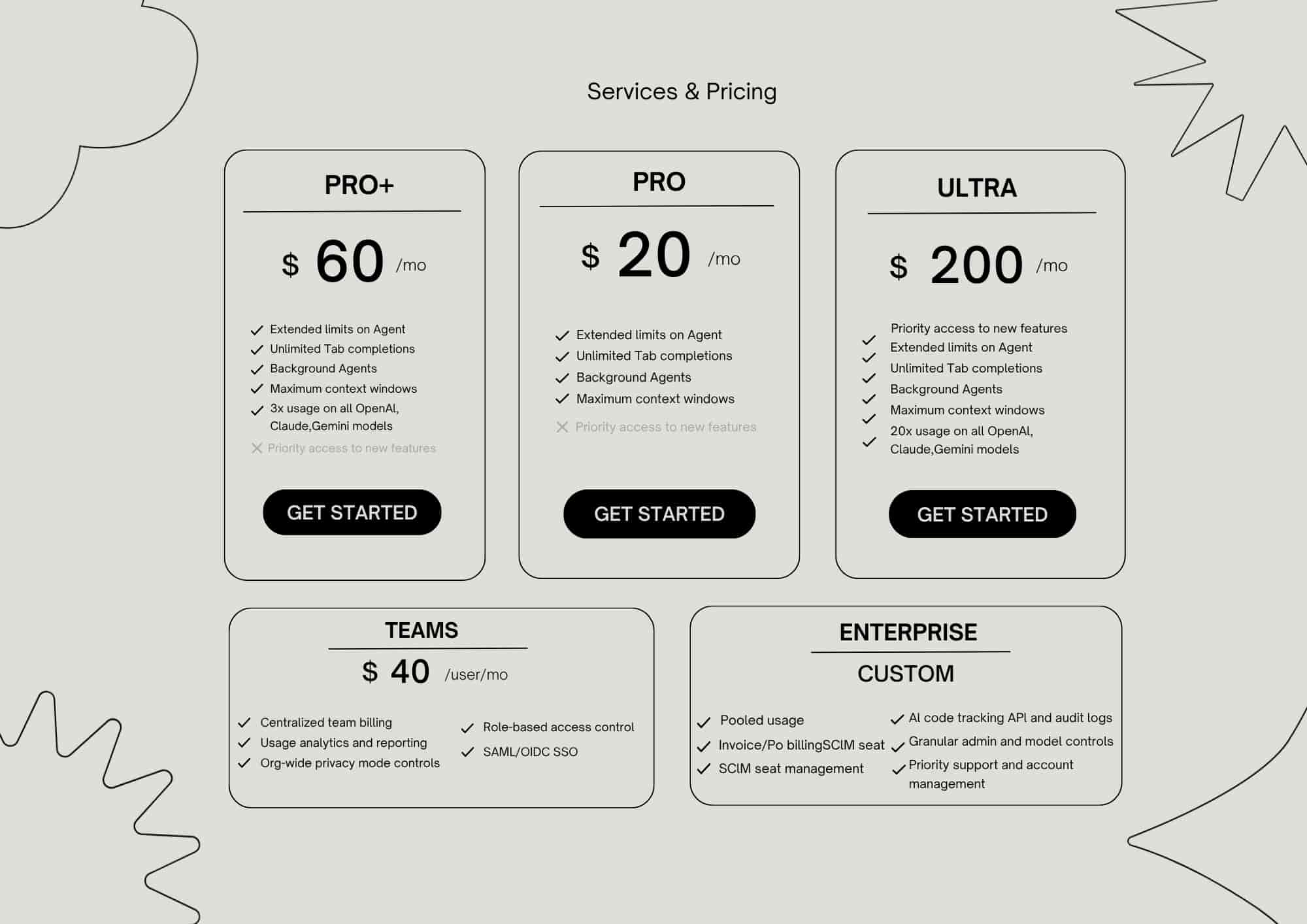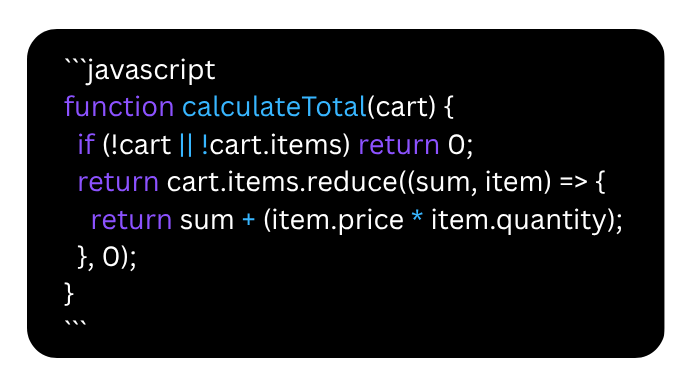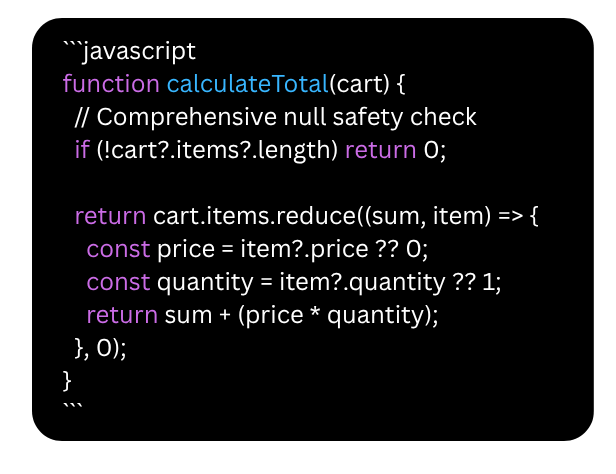Last month, you were probably amazed by how powerful Cursor was, until you opened your bill and wondered, “Why is it $250? I thought I subscribed to the $20 per month Pro plan.” Many developers have had the same question recently.
Cursor is an AI coding assistant that can understand your entire project. It does much more than just complete a few lines of code. It analyzes your project structure, generates full modules, refactors multiple files, and executes complex tasks using natural language.
After the pricing update in June 2025, many developers became confused about how Cursor actually charges. Some are unsure which actions consume extra credits, what features are free, and how to manage their usage to avoid unexpected costs.
This article provides a clear guide to Cursor’s pricing. It explains each plan’s billing rules, hidden costs, and best use cases, and also shares practical tips to help you use Cursor more efficiently and save money.
Cursor Pricing Update: From Request-Based to Usage-Based Billing
On June 16, 2025, Cursor rolled out a major pricing update.
Old Plans (Before the Update)
Previously, Cursor offered two subscription tiers: Pro ($20/month) and Team ($40/month).
Pro users received 500 Fast Requests per month.
After exceeding the limit, you could still use Cursor, but responses became slower.
There were no extra charges regardless of how many requests you made.
This setup worked well for light users, but for developers who used Cursor frequently, the Fast Request cap became a major bottleneck.
New Plans (After the Update)
Starting in June 2025, Cursor switched to a usage-based credit pool system and introduced two higher tiers: Pro+ ($60/month) and Ultra ($200/month).
Now, instead of limiting the number of requests, Cursor deducts credits based on model usage. For example, users on the Pro ($20/month) plan receive a $20 credit pool. When you use advanced models like GPT-4.1, Claude Sonnet, or Gemini Pro, the system automatically deducts the corresponding amount from your credit balance.
Once your credits run out, you can:
- Top up your balance to continue using premium models, or
- Switch to Auto Mode, which automatically selects more affordable models.
Currently, credits are only consumed when you run complex tasks, handle long contexts, or use high-end models such as GPT-4.1, Claude Sonnet, or Gemini Pro. Routine actions like code completion, simple refactoring, or using the Cursor’s built-in models are already included in your plan and do not cost extra.
How Does Cursor Pricing Work Now?
Cursor’s current pricing follows a hybrid model that combines a fixed monthly fee, a credit pool equal to that fee in USD, and extra charges for usage beyond the included credits. There are now six subscription plans available:
Hobby (Free): Includes 2,000 AI-powered code completions per month, plus 50 slow requests for more complex tasks.
Pro ($20/month): Offers unlimited Tab completions, Auto model selection, and a $20 credit pool for using advanced models like Claude Sonnet, GPT-4.1, and Gemini Pro.
Pro+ ($60/month): An upgraded version of Pro with three times the credits and limits.
Ultra ($200/month): Another step up from Pro, offering 20 times more credits and early access to new features.
Teams ($40/user/month): Includes all Pro features plus team management tools such as SSO (single sign-on). Each member gets 500 agent requests, with advanced models like GPT-4 or Claude consuming more credits.
Enterprise (Custom pricing): A more advanced version of Teams. Instead of fixed individual limits, credits are distributed by the admin based on each member’s actual usage, preventing waste or uneven allocations.
If you plan to use Cursor Pro long-term, the annual plan is more cost-effective. The monthly plan costs $20, while the yearly plan averages $16 per month, saving you about 20% (around $50 per year).

What Happens If You Exceed Your Cursor Limit?
Of course, if you use up your credits before the end of the month, you have two options:
1️⃣ Switch to Auto Mode, which automatically selects cheaper models to complete your tasks.
2️⃣ Keep using premium models and pay based on usage, with charges deducted from your account according to the rates below.
According to Cursor’s official estimates, once the $20 credit pool in the Pro plan is used up, any additional use of advanced models will be billed at the following rates:
Model | Price per request |
Claude Sonnet 4.5 | $0.09 / request |
Gemini | $0.036 / request |
GPT-5 | $0.04 / request |
How to Choose the Best Cursor Plan for You?
Choosing the right Cursor subscription plan depends on your actual workflow and usage habits. Here’s how to pick the plan that best fits your needs:
Light users: Pro Plan ($20/month)
If you mainly use Cursor for everyday coding tasks like writing new functions, fixing bugs, or refactoring small modules, and you mostly stay in Auto Mode (which is free) while occasionally testing advanced models, the $20 monthly credit should be enough for you.
Frequent users: Pro+ Plan ($60/month)
If you handle medium-sized projects daily, often use advanced models or Agent Mode, but not all day long, the Pro+ plan is ideal. Active users typically spend between $60 and $100 per month, and Pro+ gives you about three times more credits than the standard Pro plan.
Heavy users: Ultra Plan ($200/month)
For developers who code all day, manage large-scale projects, or run multiple Agents and automation tasks, the Ultra plan is essential. If you frequently use advanced models or Max Mode for high-context operations, your credits will run out quickly. The Ultra plan provides roughly $300 worth of usage—about 20 times more than Pro—making it perfect for demanding workloads.
Teams and collaboration: Teams/Enterprise Plan ($40 per user/month)
If your team needs single sign-on (SSO) and centralized management tools, go for the Teams or Enterprise plan. Both include the same core features as Pro. The Teams plan gives each member 500 request credits, while Enterprise allows the admin to manage a shared credit pool and allocate usage flexibly based on each member’s needs.
While using Cursor, you may find that beyond the monthly subscription fee, there are several hidden costs that can quickly increase your expenses if not managed carefully.
Using High-End Models
When you choose high-end models like Claude Sonnet 4.5 or GPT-5, credits are deducted from your credit pool. Under the current system, the Pro plan ($20/month) gives you a fixed credit pool worth $20.
On average, this covers about 225 Claude Sonnet 4.5 requests, 550 Gemini requests, or 500 GPT-5 requests. Upgrading to Pro+ triples your credit pool, while Ultra gives you 20 times the amount included in the Pro plan.
Enabling Max Mode
By default, the regular mode supports a context window of up to 200,000 tokens (around 15,000 lines of code). If your context exceeds that, you’ll need to manually enable Max Mode, which expands the limit depending on the model.
For example, Gemini 2.5 Pro and GPT-4.1 can handle up to 1 million tokens, but using this mode consumes more credits.
Activating Agent Mode
When you enable Agent Mode (where AI performs multi-step tasks automatically), Cursor runs several model calls in the background to complete complex operations.
Each of these counts as a separate request, so Agent Mode costs significantly more than normal mode. Every extra agent request costs around $0.04 per call.
How to Reduce Extra Cursor Usage Costs?
Your usage habits directly affect how much you spend. If you want to avoid extra charges, pay attention to the following tips:
Use Auto Mode whenever possible
Auto Mode works like Cursor’s built-in “smart saver.” It automatically selects the cheapest model that’s powerful enough for your task.

For example, if you just need to fix a small bug, Auto Mode will choose a lightweight model instead of a costly one like Claude Sonnet 4, which may be overkill for that task.

Use Tab completions instead of Chat
Tab completion is completely free, while every Chat interaction (like asking questions, rewriting, or explaining code) consumes credits in the background.

For instance, if you’re refactoring a Python function to improve readability, Tab completion can often give you a clean, efficient result without using any credits.
Break tasks into smaller steps
Cursor’s billing is tied to context length. The more code and information you feed in at once, the faster your credits are consumed. Breaking your work into smaller parts helps save credits.
Set a budget alert
On the billing page, you can track your credit balance in real time and set spending limits. Once your credits run low, Cursor will send you a notification so you won’t be caught off guard by a sudden end-of-month bill spike.
How to Save on Cursor Subscription Through GamsGo?
Besides controlling usage, you can save even more by choosing where you subscribe. GamsGo is a trusted subscription-sharing platform that helps users subscribe to Cursor at a lower cost.
Through GamsGo, you can get the full Cursor Pro experience at a much lower price — starting at around $8.65/month, which is nearly 60% cheaper than the official price. You still get the same $20 monthly credit pool and full feature access.
All sellers on GamsGo are strictly verified to ensure account safety, timely delivery, and reliable after-sales support, making the whole subscription process smooth and secure.
GamsGo also regularly adds new Cursor subscription options, often with limited-time discounts, so whether you want a short-term trial or a long-term plan, you’ll find flexible and affordable options.
Conclusion: How to Choose the Right Cursor Plan
Since Cursor switched from a “fixed request limit” model to a USD-based credit pool system, pricing may seem more complex. But once you understand how it works, you’ll see that the Pro plan still offers the best value for most users.
Even if you use Cursor frequently, subscribing through GamsGo can dramatically cut your costs. The cheapest plans are up to 60% less than the official price, yet include the same $20 monthly credit pool.
If you’re still unsure whether to subscribe, try the free plan or test the Pro plan for a week first. This way, you can track your real usage and decide if it’s worth upgrading later.
FAQ
Does Cursor Have a Free Limit?
Yes. Cursor offers a free Hobby Plan with 2,000 AI code completions and 50 slow requests per month — enough for learning and light use. New users also get a 7-day free Pro trial with unlimited Tab completions, Auto Mode, and a $20 credit pool.
How to Get Free Cursor AI for Students?
Verified students can get one year of Cursor Pro for free. Simply sign up with your school email and complete the verification on the student page. If you already have a paid plan, Cursor will automatically refund the remaining balance.
Is Cursor AI Better Than ChatGPT?
It depends on your use case. Cursor is built for coding, understanding full project context, and refactoring code inside your editor, making it ideal for developers. ChatGPT, on the other hand, is a general AI assistant better suited for writing, brainstorming, and learning.
Related Articles:
ChatGPT Pricing 2025: Find the Right Plan for You









